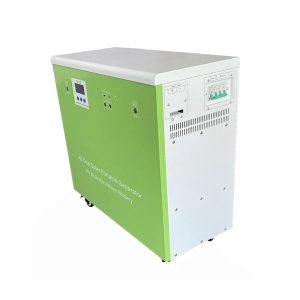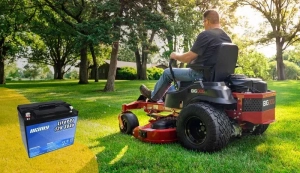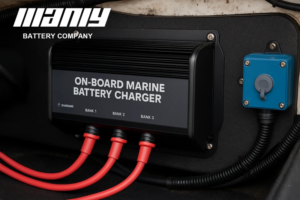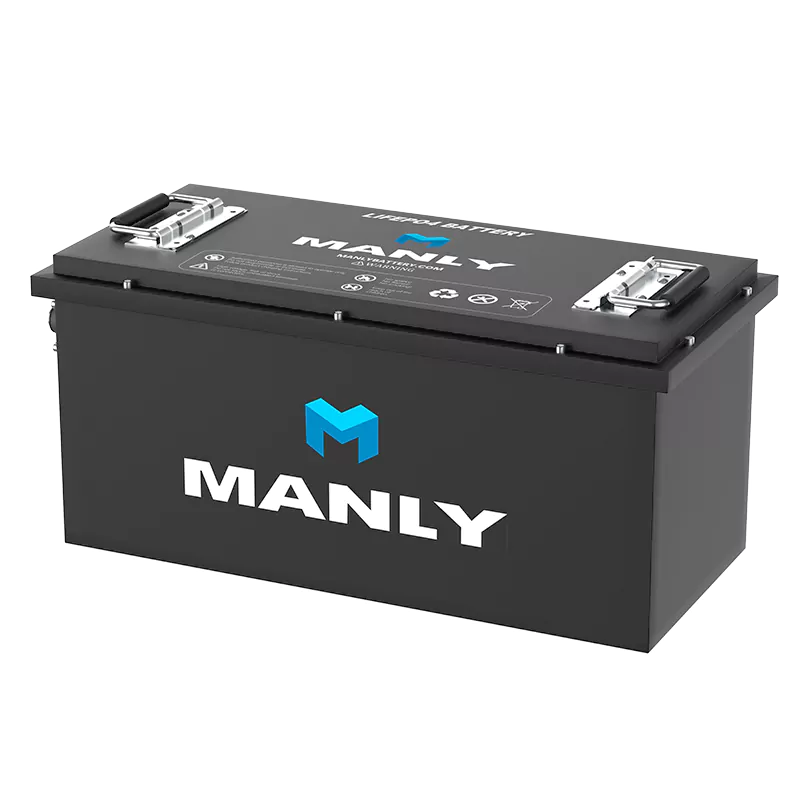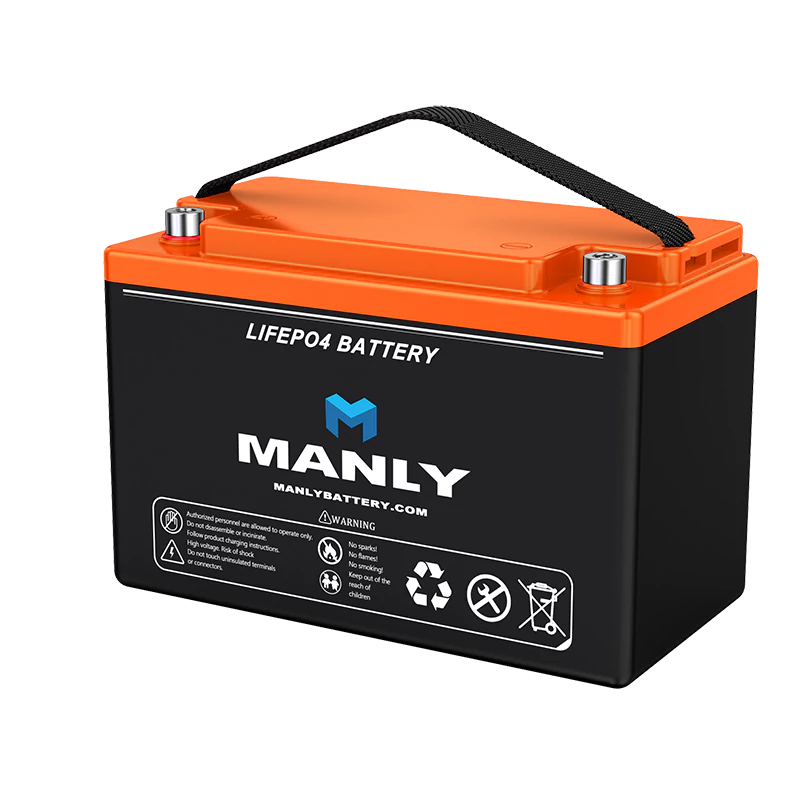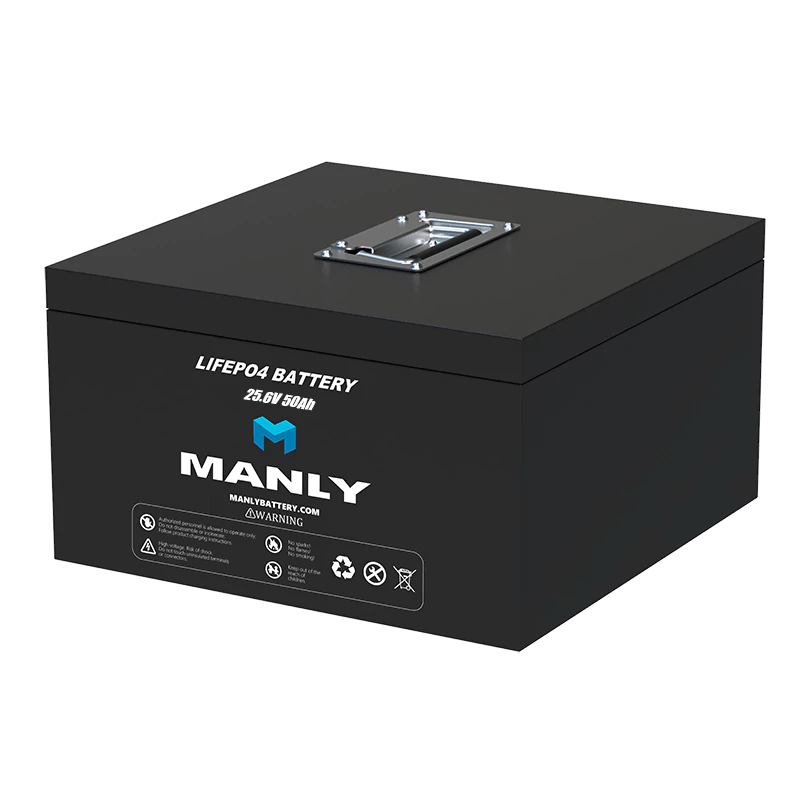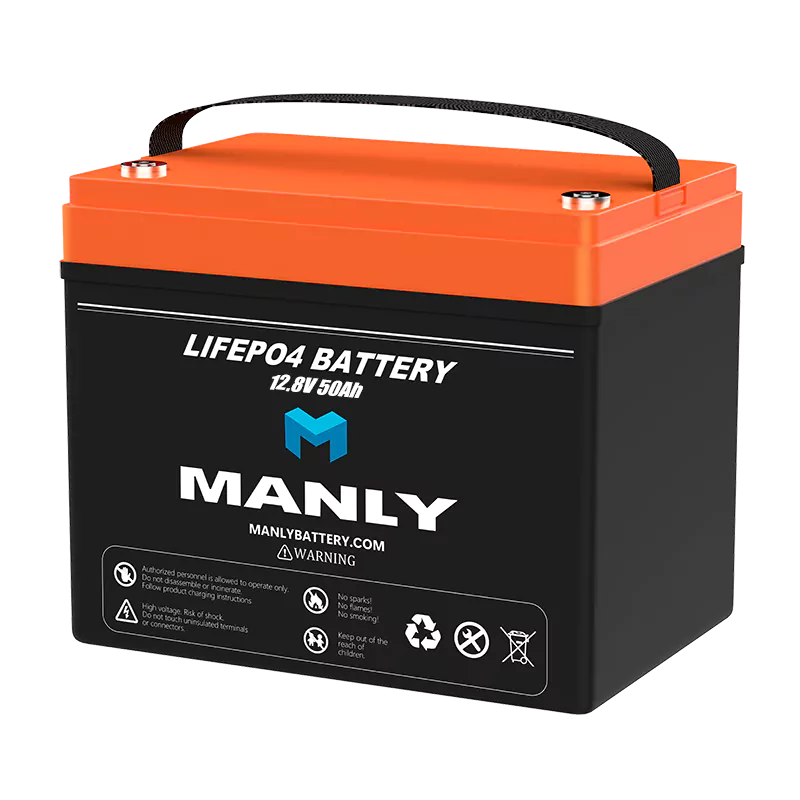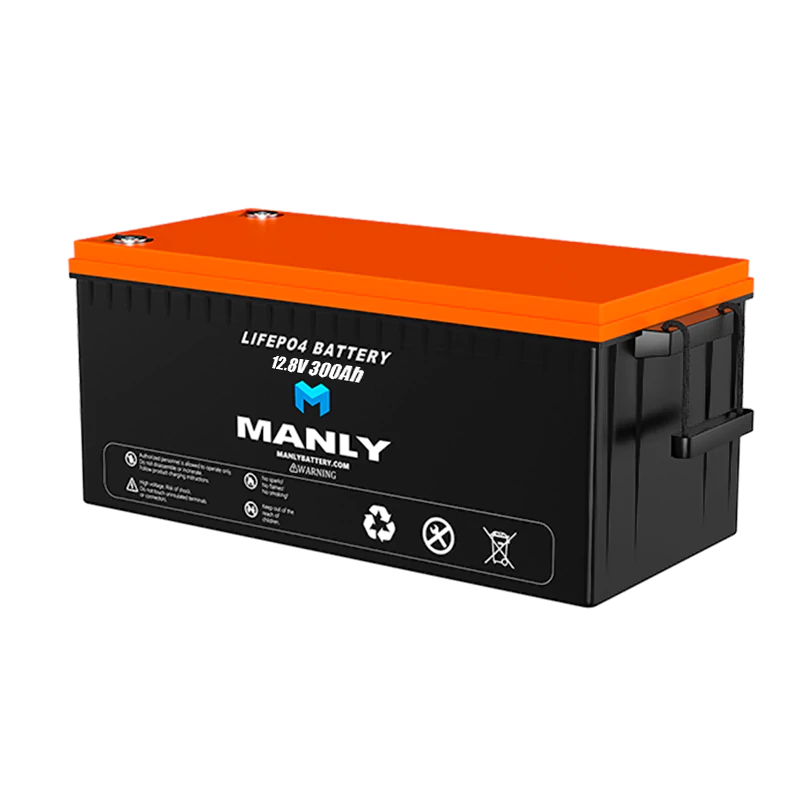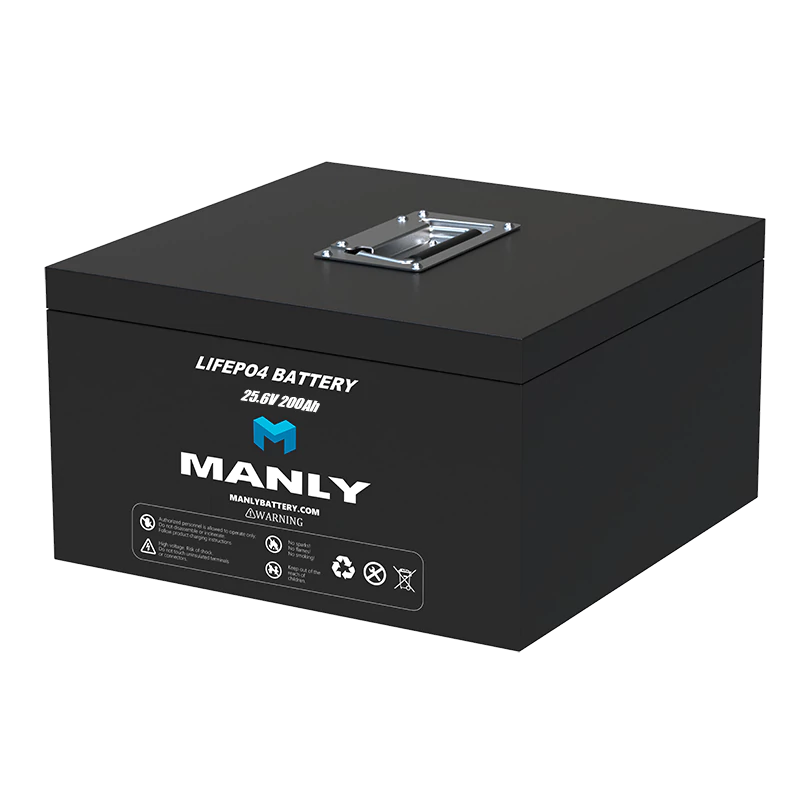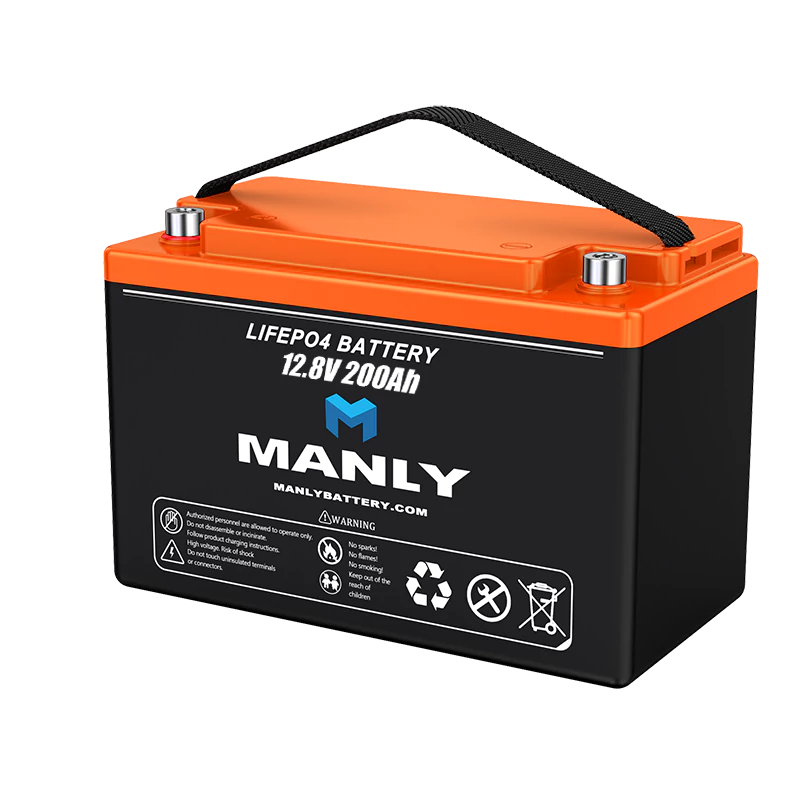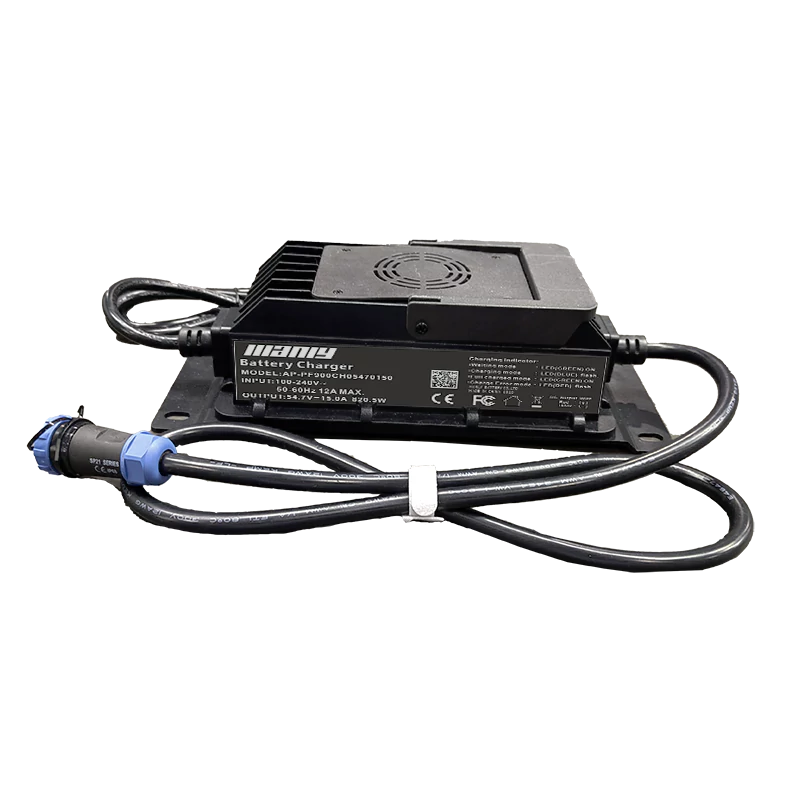How Boat Forklifts Work & Choose the Right Forklift Battery
Table of Contents
- How Boat Forklifts Work & Choose the Right Forklift Battery
- What is a Boat Forklift?
- How Boat Forklifts Work
- Boat Forklift Capacity Calculator
- Applications of Boat Forklifts
- What are the Different Forklift Types?
- How to Choose Between Lithium-Ion and Lead Acid Forklifts
- Forklift Battery Types
- Forklift Battery Sizes
- Forklift Battery Charging
- Boat Forklift Battery Requirements
- Conclusion
- FAQ
- Hot Search
- Learn More About Battery
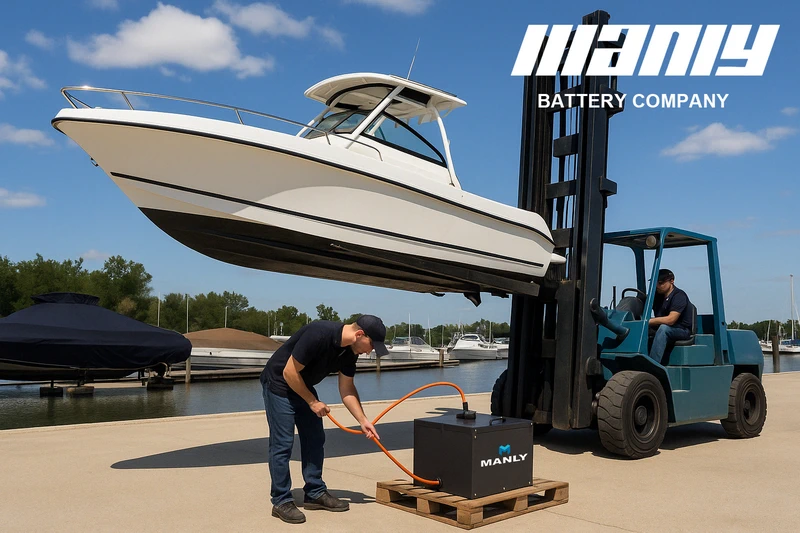
What is a Boat Forklift?
A boat forklift is a specialized vehicle used primarily in marinas, boatyards, and coastal facilities to lift, transport, and store boats. Similar to a traditional forklift, it features robust lifting mechanisms but is specifically designed for handling boats of varying sizes—from small fishing boats to large yachts. These forklifts operate on the same basic principle as conventional forklifts but are equipped with additional features tailored to the delicate nature of watercraft. They use hydraulic systems and adjustable arms to move boats safely and efficiently without damaging the hull or other sensitive components.Unlike traditional forklifts that are designed for heavy industrial materials, boat forklifts are built to be highly maneuverable in tight spaces, often on docks or near the water's edge. Their design ensures that boats can be handled gently, even when lifting large and heavy vessels, making them a crucial tool for marinas and boatyards.1. Understanding Boat Forklift Functionality
The functionality of a boat forklift revolves around its ability to safely lift boats out of the water and transport them to storage or maintenance areas on land. Powered by either lithium batteries for forklifts or traditional lead-acid batteries, boat forklifts can manage the delicate balance of lifting and moving boats. These forklifts feature adjustable lifting arms and strong slings or straps that are customized to fit the size and shape of each ship.Most boat forklifts utilize hydraulic systems to lift boats, using hydraulic pumps and cylinders to generate the power needed to handle the heavy weight of watercraft. These systems' flexibility allows operators to adjust the lifting slings to securely hold the boat, ensuring it is lifted smoothly without causing damage to the hull.The hydraulic lifting arms on these machines are typically designed to extend and retract, offering a wide range of motion that helps position boats efficiently, even in crowded or narrow marina spaces. These forklifts are often used with a marina's docking infrastructure, making it easy to retrieve and store boats quickly and safely.2. Key Applications in Marinas and Boat Yards
Boat forklifts serve several critical functions in marinas and boatyards, each vital to the operation and maintenance of watercraft. Some of the key applications include:- Launching and Retrieval: Boat forklifts are essential for placing boats in the water and bringing them out when unused. This function ensures that boats are kept safe and secure for recreational use or routine inspections.
- Maintenance and Repairs: Boatyards rely on forklifts to remove boats from the water for repairs or maintenance. The forklifts allow easy access to the hull, propellers, and other critical parts of the boat, facilitating efficient maintenance operations.
- Off-season Storage and Winterization: During the off-season, boat forklifts transport boats to storage areas, such as dry racks or boatyards. This helps protect boats from long-term water exposure and prevents damage from harsh weather conditions during winter.
- Emergency Situations: In storms or dangerous water conditions, boat forklifts can quickly remove boats from the water to minimize damage and ensure safety. Their quick action is critical in emergency scenarios, where time is of the essence.
3. Advantages Of Traditional Boat Hoists
When compared to traditional boat hoists, boat forklifts offer several notable advantages, including:- Higher Capacity: Unlike conventional boat hoists, which may struggle with larger or heavier boats, boat forklifts can handle a wider variety of boat sizes, making them a more versatile tool for boatyards and marinas.
- Greater Efficiency: Boat forklifts are designed for speed and efficiency, allowing boats to be quickly lifted and transported to dry land or storage without unnecessary delays. This reduces downtime for marinas, improving overall operational efficiency.
- Customizable for Different Boats: Many modern boat forklifts are equipped with adjustable lifting arms and slings, allowing them to handle boats of all shapes and sizes. This customization ensures that boats are lifted securely, minimizing the risk of damage during the process.
- Cost-Effectiveness: Over time, boat forklifts' operational efficiency and lower maintenance costs can provide a more cost-effective solution for boat transport and storage than traditional boat hoists.
How Boat Forklifts Work
A boat forklift operates based on similar principles to traditional forklifts but with added adaptations to suit boats' unique needs. The key components of a boat forklift are its hydraulic system, lifting arms, and customizable slings, all of which are designed to handle the specific challenges of lifting boats from the water and transporting them to land.1. Hydraulic Systems and Lifting Mechanisms
The hydraulic systems in boat forklifts provide the muscle to lift and lower boats. These systems use hydraulic pumps and cylinders that pressurize fluid to create mechanical force. This allows the forklift to handle the heavy weight of boats safely and with precision.The lifting arms of a boat forklift are equipped with adjustable slings or straps, which ensure a secure grip on the boat during lifting and moving. The hydraulic mechanism adjusts the lifting arms to accommodate different boat sizes, allowing the forklift to lift vessels smoothly and carefully. This ensures that boats remain undamaged during the lifting process, whether launched into the water or stored on land.2. Powering Boat Forklifts: Lithium vs. Lead Acid
Powering a boat forklift requires a reliable energy source. Forklifts typically run on either lithium batteries for forklifts or traditional lead-acid batteries, with the former becoming more popular due to several advantages.- Lithium Batteries for Forklifts: These batteries are more energy-efficient, charge faster, and last longer than lead-acid batteries. A forklift lithium battery can provide a higher performance output, reducing operational costs in the long run by eliminating the need for frequent battery replacements. Furthermore, forklift lithium batteries require minimal maintenance and can operate in a broader range of temperatures.
- Lead Acid Batteries: Although these are a more affordable initial investment, lead-acid batteries require more maintenance and do not offer the same lifespan or efficiency as lithium batteries for forklifts. They also take longer to charge and may require specific charging stations and maintenance, such as regular water filling.
3. Customizing Forklifts for Different Boat Sizes
Boat forklifts are designed to be flexible and customizable, enabling them to handle a wide range of boat sizes. The forklifts can have adjustable lifting arms, slings, or custom-designed cradles that accommodate different hull shapes and sizes. This adaptability ensures that marinas and boatyards can easily and safely handle boats of all types—small dinghies, mid-size boats, or large luxury yachts.By referring to a forklift battery size chart, operators can also match the appropriate battery size to the forklift, ensuring optimal performance and handling based on the specific needs of their boatyard. Customization allows for greater efficiency and safety, ensuring that boats are moved without damage, regardless of size or design.4. Estimating Your Boat Forklift Capacity
Enter your boat’s weight (in kilograms or pounds) and set a Safety Factor—typically 1.2 to 1.5—to build in a 20–50% safety margin for shifting straps, wind gusts, or small waves. When you click “Calculate,” the tool multiplies your boat’s weight by that factor to display the Required Forklift Capacity. This ensures you select a boat forklift rated to handle real‑world lifting conditions without risk of overload.
Boat Forklift Capacity Calculator
Applications of Boat Forklifts
Boat forklifts are indispensable for marinas and boatyards, offering a variety of practical applications that streamline operations and ensure boat safety. These forklifts are specialized vehicles designed to lift, transport, and store boats, ranging from small fishing boats to large luxury yachts. Their versatility makes them essential for everyday boat handling, emergency situations, and seasonal storage. Here’s a closer look at the key applications of boat forklifts: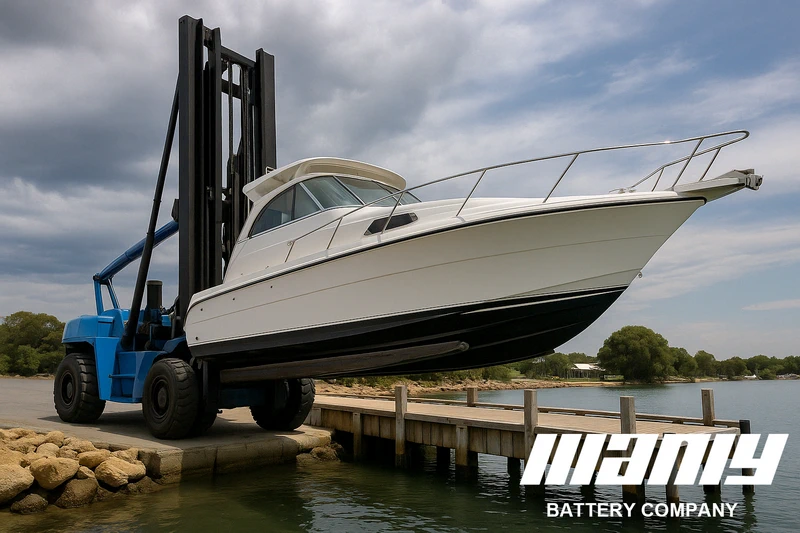
1. Launching and Retrieving Boats
One of the primary applications of a boat forklift is launching and retrieving boats. These forklifts are engineered to safely hoist boats out of the water and gently lower them back when needed. These forklifts' hydraulic arms and lifting slings can be adjusted to fit various boat sizes, ensuring a secure and damage-free process. This functionality is crucial in marinas, where boats are frequently launched for leisure or transported to dry storage for maintenance.Using forklift lithium batteries allows these forklifts to operate efficiently, with shorter charging times and reduced maintenance compared to traditional lead-acid batteries. This reduces downtime and increases productivity, especially during peak boating seasons.2. Boat Maintenance and Storage
Boat forklifts are not just for launching and retrieving boats; they also play a critical role in boat maintenance and storage. When boats are lifted from the water, technicians can inspect hulls, clean propellers, apply antifouling coatings, and perform other essential maintenance tasks. These forklifts lift boats with little effort, which helps reduce damage from handling heavy vessels manually.Additionally, boat forklifts are key to off-season storage. These forklifts safely transport boats to storage areas such as dry racks or sheltered boatyards during winter or when boats are not in use. Using lithium batteries for forklifts allows for faster recharging, enabling marinas to handle a higher volume of boats in less time, ensuring they are stored safely until they are needed again.3. Emergency and Hazard Response Operations
In emergencies, boat forklifts provide a crucial service by quickly removing boats from the water to prevent damage or safeguard them from potential hazards. Whether it's an impending storm, oil spill, or an environmental hazard in the water, boat forklifts can rapidly lift and move boats to a safe, dry location. Fast response times are crucial for marinas and boatyards. They help protect property and keep both boats and their owners safe.What are the Different Forklift Types?
Understanding the different types available can help you choose the right forklift for your operations. Whether you’re managing a marina or a warehouse, knowing each forklift class's distinct features and capabilities can help you make an informed decision. Below is an overview of the main forklift classes, with specific attention to the advantages and applications of each type.1. Class I: Electric Motor Riders
Class I forklifts, also known as electric motor riders, are powered by forklift lithium batteries and are ideal for indoor use. These forklifts are commonly found in warehouses and retail settings where low emissions and quiet operation are essential. Their battery-powered design lets them perform many tasks, such as loading and unloading goods, stacking pallets, and moving heavy materials. Forklift lithium batteries make these forklifts more energy-efficient and reduce maintenance, as they do not require frequent battery changes or water maintenance, unlike their lead-acid counterparts.2. Class II: Electric Motor Narrow Aisle Forklifts
Class II forklifts are specifically designed for narrow aisles and tight spaces. These forklifts are highly maneuverable and are perfect for environments like warehouses that require efficient use of space. They are typically powered by forklift lithium batteries, which allow them to perform long shifts with minimal downtime. Their small size and quiet operation make them an excellent option for places that need to maximize storage space.3. Class III: Electric Pallet Jacks / Stackers
Class III forklifts, including electric pallet jacks, stackers, and tow tractors, are versatile tools for material handling in smaller spaces. They are commonly found in food storage facilities and distribution centers. This class's forklift lithium battery options ensure longer battery life, reducing the need for frequent recharging and extending operational efficiency.3. Class IV: Internal Combustion Engine Cushion Tire Forklifts
Class IV forklifts use internal combustion (IC) engines designed for indoor applications, particularly in factories and manufacturing plants. They are powerful machines capable of handling large loads with precision. Although they are typically powered by gasoline, diesel, or propane, these forklifts are more commonly seen in environments where space is limited and the need for maneuverability is high.4. Class V: Internal Combustion Engine Pneumatic Tire Forklifts
Class V forklifts are similar to Class IV but designed for outdoor use. They are equipped with larger tires, which allow them to navigate rough terrain and construction sites. Powered by internal combustion engines, they can lift heavy loads and handle challenging outdoor conditions, making them ideal for use in lumberyards, construction sites, and other rugged environments.5. Class VI: Electric/IC Engine Tow Tractors
Class VI forklifts are tow tractors designed primarily for towing rather than lifting. They are ideal for airports, assembly lines, and other industrial applications where materials need to be moved across large distances. They are available in electric and internal combustion engine variants, providing flexibility depending on operational needs.6. Class VII: Rough Terrain Forklifts
Class VII forklifts are built to handle heavy-duty tasks on rough terrain. These machines are typically found in construction sites, lumberyards, and other outdoor settings. Equipped with large tires and internal combustion engines, they are designed to handle challenging surfaces while lifting heavy materials, ensuring stability and safety.How to Choose Between Lithium-Ion and Lead Acid Forklifts
One of the most critical decisions when selecting a forklift for your operations is whether to go with lithium-ion or lead-acid batteries. Each battery type has advantages, and the right choice depends on your specific needs, including budget, operational hours, maintenance capabilities, and energy efficiency goals. This section will help you make an informed decision by comparing the key benefits of each option.1. Lithium-Ion Forklift Benefits
Lithium-ion forklifts offer several advantages over lead acid forklifts, especially regarding energy efficiency and longevity. These batteries are known for delivering consistent power and performance with fewer interruptions. Lithium batteries for forklifts are compact, lighter, and have higher energy density, meaning they require less space and can operate for extended periods on a single charge.A major benefit of lithium-ion forklifts is their minimal maintenance needs. Unlike lead-acid forklifts, which require frequent watering and equalization charging, lithium-ion batteries are sealed and maintenance-free. Their built-in battery management systems (BMS) ensure they charge and discharge safely without needing regular attention.Another notable advantage is faster charging times. Lithium batteries for forklifts can be charged to 80% in an hour, compared to the longer charging cycles required by lead acid batteries. This allows for opportunity charging, meaning you can top off the battery during breaks, leading to higher uptime and productivity.2. Lead Acid Forklift Benefits
While lithium-ion forklifts are often the preferred choice for modern operations, lead-acid forklifts still offer a few benefits, particularly for businesses with lower initial budgets. The forklift battery size chart for lead-acid forklifts offers various options suitable for a range of applications, from lighter-duty to heavy-duty lifting.Lead acid forklifts are typically less expensive upfront, making them a more economical choice for businesses with limited capital. Additionally, they have a proven track record in many industries, with reliable performance in traditional warehouses and distribution centers. They can also be more cost-effective for smaller operations that don’t need the extended operational hours provided by lithium-ion forklifts.However, it’s essential to note that lead-acid batteries require more frequent maintenance and are less energy-efficient than lithium-ion batteries. They also take longer to recharge, leading to more downtime between shifts.3. Energy Efficiency and Total Cost of Ownership Comparison
When comparing lithium-ion forklifts to lead acid forklifts, energy efficiency and total cost of ownership (TCO) should be central to your decision-making process. While lithium-ion forklifts have a higher upfront cost, their long-term savings make them a superior choice for businesses looking to reduce operational costs.Lithium-ion forklifts offer superior energy efficiency. They charge faster and retain power longer, reducing energy costs over time. Their longer lifespan, with lithium batteries for forklifts lasting up to 3,000 cycles, means fewer replacements and lower labor costs associated with battery maintenance.In contrast, lead-acid forklifts have a lower initial purchase price but higher operational costs. These forklifts require frequent battery replacements, typically after 1,000-1,500 charge cycles, and their maintenance needs—such as regular watering and temperature control—can add significant costs.When factoring in the total cost of ownership, lithium-ion forklifts provide better value in the long run due to their lower maintenance needs, faster charging times, and longer lifespan.Forklift Battery Types
Understanding the various forklift battery types is crucial when selecting the right forklift for your business. Two main types of batteries dominate the market: lithium-ion forklifts and lead acid forklifts. Each type has specific benefits depending on the operational environment, usage patterns, and maintenance preferences.1. Lithium-Ion Forklifts vs. Lead Acid Forklifts
One primary difference between lithium-ion forklifts and lead-acid forklifts is their energy efficiency. Lithium-ion forklifts are more energy-efficient, provide longer operational hours, and require less maintenance. They are ideal for businesses looking to optimize productivity and reduce downtime.On the other hand, lead-acid forklifts remain a viable option for businesses with tight budgets or those operating in environments with lower usage. These forklifts still perform well in many traditional warehouse settings, though they require more maintenance and have a shorter lifespan than lithium-ion forklifts.2. Advantages of Lithium-Ion Forklift Batteries
The main advantages of lithium-ion forklift batteries are their longer lifespan, quicker charging time, and minimal maintenance needs. Lithium batteries for forklifts are sealed, so there’s no need for constant watering, and they’re less prone to the typical wear and tear that affects lead acid batteries. Their higher energy density allows for more efficient energy use and extended operational times.Lithium-ion forklifts are also more adaptable to different environments. They perform well in both high- and low-temperature settings, making them a versatile choice for warehouses with varying climate conditions.3. When to Choose Lead Acid Forklifts
Lead acid forklifts are still an excellent option for businesses that don’t require the rapid charging times and minimal maintenance associated with lithium-ion forklifts. If your business operates in a setting where forklifts aren’t used constantly, or if you have budget constraints, lead acid forklifts might be a suitable choice.Lead-acid batteries are also effective in environments with stable temperatures and lower workloads. For businesses that operate in industries like construction or agriculture, where forklifts are used sporadically, lead-acid forklifts can offer the necessary power at a more affordable price point.Forklift Battery Sizes
When choosing the right forklift battery, it's essential to consider both the voltage and the amp-hour (Ah) rating. These factors directly impact the forklift's performance, including its lifting capacity, run time and efficiency. Understanding forklift battery sizes is key to ensuring you select a battery that matches the demands of your operation. This section will explore the different battery sizes and how they affect forklift performance.1. Understanding Forklift Battery Size Chart
The forklift battery size chart is essential for selecting the correct battery for your equipment. Forklift batteries come in various sizes, typically differentiated by voltage and amp-hour (Ah) ratings. These ratings indicate the power output and the battery's capacity to sustain long periods of operation.Here’s a general breakdown of forklift battery sizes and their typical applications:- 24V batteries: These are commonly used in smaller forklifts such as walkie stackers and end riders. They're suitable for light-duty applications where lifting capacity isn’t a significant concern.
- 36V batteries: These are ideal for mid-sized forklifts, such as narrow aisle forklifts or stand-up counterbalanced forklifts, providing a good balance of power and runtime.
- 48V batteries: 48V batteries power more substantial equipment, such as sit-down counterbalanced forklifts and high-capacity models. They offer more power for heavy-duty lifting and longer operation times.
- 80V batteries: These are used in the largest forklifts designed for heavy-duty tasks. They provide the maximum power needed for large warehouse operations or outdoor environments with rough terrain.
2. Choosing the Right Voltage for Your Forklift
Selecting the appropriate voltage for your forklift lithium battery or lead-acid forklift battery depends on the forklift's power requirements. Higher voltage batteries, like 48V and 80V, provide more power for larger and heavier equipment, while lower voltage batteries, such as 24V, are more suited for lighter tasks.- 24V is ideal for smaller, lighter equipment, ensuring the forklift is energy-efficient for short-duration tasks.
- 48V and 80V are better suited for demanding applications, offering higher power output and longer runtimes in more intensive work environments.
3. How Battery Size Affects Forklift Performance
The size of the forklift battery directly impacts the forklift's lifting capacity, energy efficiency, and overall performance. Larger batteries, such as 48V or 80V, provide more power for heavy-duty tasks, enabling forklifts to lift heavier loads over longer periods.However, larger batteries are also heavier, which can affect maneuverability, especially in tight spaces. Smaller batteries, while lighter, may not be suitable for demanding tasks and could result in shorter runtimes, leading to more frequent recharging and potential downtime.Thus, choosing the right battery size is essential for ensuring that the forklift can handle the workload efficiently without sacrificing maneuverability or energy efficiency.Forklift Battery Charging
Charging your forklift batteries correctly is critical to maximizing battery life and reducing operational downtime. This section will explore the differences between charging lithium-ion and lead acid forklift batteries and provide guidance on setting up and maintaining a charging station for an electric forklift for optimal performance.1. Charging Lithium-Ion Batteries vs. Lead Acid Batteries
Lithium-ion and lead acid forklift batteries differ significantly in charging time, efficiency, and maintenance needs.- Lithium-ion batteries are faster to charge and require less maintenance. They can also be opportunity charged, which means they can be charged during breaks or low-demand times without negatively affecting their lifespan.
- Lead acid batteries, on the other hand, require a complete charge cycle and take longer to charge. They also require more maintenance, including regular watering and equalizing charges to prevent sulfate build-up.
2. Opportunity Charging for Lithium-Ion Forklifts
One of the standout features of lithium-ion forklifts is their ability to take advantage of opportunity charging. This means forklifts can be recharged during idle periods, such as breaks or shift changes, without waiting for the battery to deplete completely.Opportunity charging is highly beneficial for businesses that operate around the clock. It allows the forklift to run continuously throughout the day, crucial for maximizing productivity and minimizing downtime.However, monitoring the battery's state of charge is essential to ensure it doesn’t exceed recommended levels and avoid potential overheating or damage.3. Charging Station Setup and Maintenance
Setting up a forklift battery charging station requires careful planning. Because lead-acid forklift batteries release gases during the charging process, they need a designated charging room with good ventilation. Additionally, lead-acid batteries require special equipment to lift and swap out discharged batteries.In contrast, lithium-ion forklift batteries do not require a specialized room or equipment. They are much easier to charge, as they simply need to be plugged into a charger and do not need time to cool down between charges.It is essential to ensure that your charging station is appropriately set up, with enough space for multiple forklifts and an efficient system for monitoring battery health.4. Boat Forklift Battery Charging Time Calculator
Understanding the differences in charging speed and maintenance between lithium-ion and lead-acid forklift batteries is just the first step. In real-world marina operations, knowing how long it actually takes to charge your boat forklift battery can help reduce downtime and plan shifts more efficiently.
To make it easier, we’ve included a simple tool below. Just enter your battery’s capacity and your charger’s output, then select the battery type. The calculator will show you the estimated time to reach 80% and 100% charge—based on typical efficiency levels for each battery type. Whether you're upgrading to lithium or still using lead-acid, this helps you stay ahead of scheduling and avoid surprises on the dock.
Boat Forklift Battery Charging Time Calculator
Boat Forklift Battery Requirements
Operating a boat forklift involves unique challenges due to the exposure to water, salt, and harsh environmental conditions. Selecting the correct forklift battery for marine environments is essential for ensuring long-lasting performance and safety.1. Choosing the Right Battery for Boat Forklifts
When selecting a battery for boat forklifts, it is crucial to consider both the voltage and the environmental conditions. Lithium-ion batteries are increasingly popular because they are more resistant to corrosion and require less maintenance than lead-acid batteries.- Lithium-ion batteries for boat forklifts are sealed and more durable in wet and salty environments, making them ideal for the marine industry. Their long lifespan and efficiency make them a cost-effective option for boat lifting operations.
- Lead acid batteries are still commonly used but require regular maintenance and are more prone to corrosion when exposed to moisture.
2. Waterproofing and Corrosion Resistance
Batteries used in boat forklifts must be waterproof and corrosion-resistant. Lithium-ion forklift batteries are designed to be more resistant to moisture and corrosion than lead-acid batteries. This makes lithium batteries the preferred choice for marine environments, where the forklifts are exposed to water, salt, and humidity.While widely used in marine applications, lead-acid batteries require additional care to prevent water from seeping into the battery casing, which can cause internal damage and shorten the battery’s lifespan.3. Lithium-Ion Batteries for Marine Environments
Lithium-ion forklift batteries offer significant advantages in marine environments due to their durability and efficiency. Unlike lead acid batteries, they do not require regular watering or equalizing charges, reducing maintenance needs. The sealed design of lithium-ion batteries helps prevent corrosion from saltwater exposure, making them a reliable choice for boat forklifts used in marinas and boatyards.Lithium-ion batteries for forklifts, with their compact size and longer lifespan, are also an excellent investment for businesses looking to improve their equipment’s performance and reduce long-term costs.Conclusion
In the demanding world of marine logistics, every second and every lift counts. A well-chosen boat forklift combined with the correct battery doesn't just move boats—it drives efficiency, safety, and profitability across your entire operation. As we’ve explored, lithium-ion batteries offer significant long-term value with faster charging, lower maintenance, and superior performance in harsh marine environments. While cost-effective up front, lead-acid batteries may require more upkeep and deliver shorter life cycles.Ultimately, your choice comes down to how your marina or yard operates—and how much downtime and maintenance you're willing to accept. But no matter your setup, investing in the right forklift and power system ensures smoother operations, protects valuable assets, and gives you a clear edge in an increasingly competitive industry.FAQ
1. What is a marine forklift?
A marine forklift, also known as a boat forklift, is a specialized lift vehicle used in marinas and boatyards to lift, transport, and store boats. Unlike standard forklifts, marine forklifts feature long, adjustable arms and corrosion-resistant construction to safely move boats in and out of the water. They are commonly powered by a forklift battery and are designed to operate efficiently in wet, salty environments near the coast.
2. Are forklift batteries AC or DC?
Forklift batteries provide DC (direct current) power. Whether using traditional lead-acid or modern lithium forklift batteries, the output is always DC, which is required to run electric forklift motors. The battery charger, however, plugs into an AC outlet and converts that AC electricity into DC to charge the battery properly.


